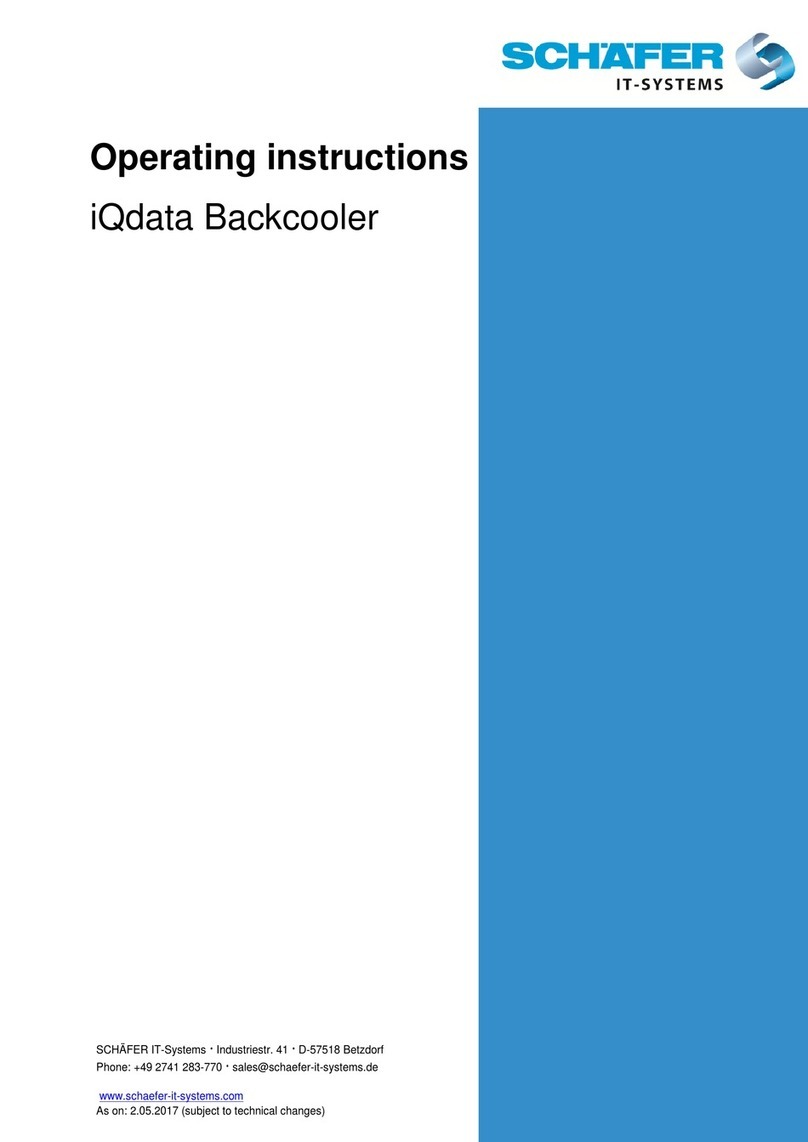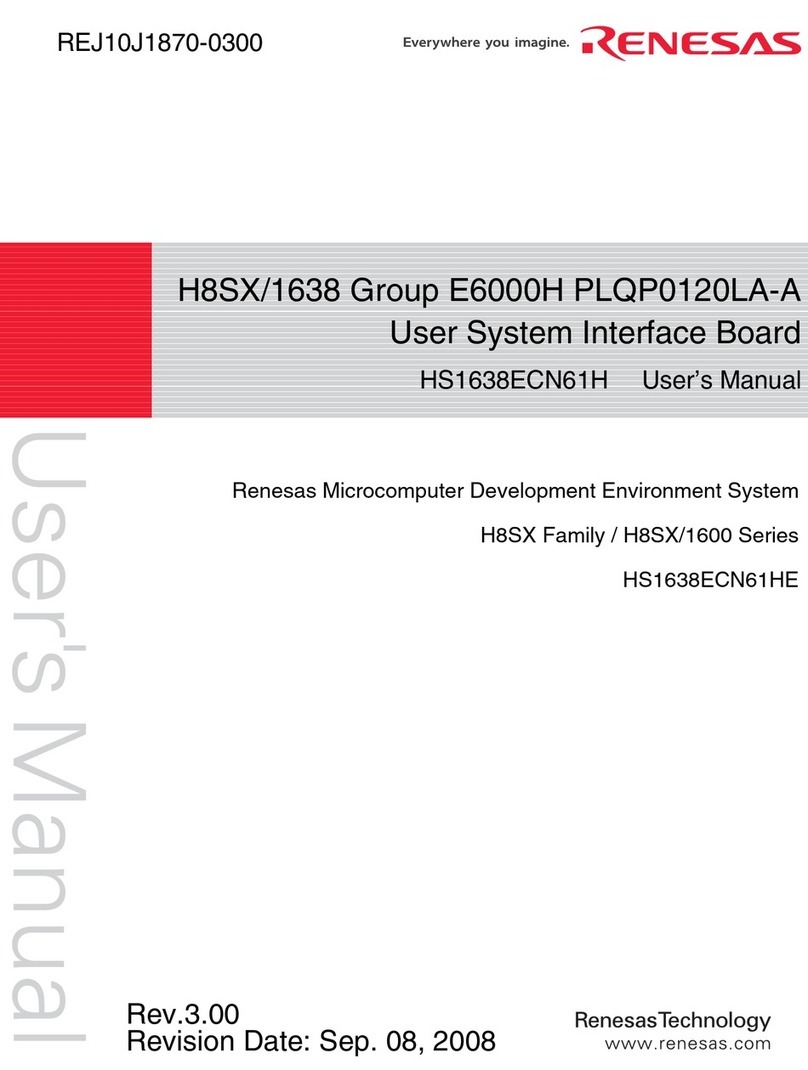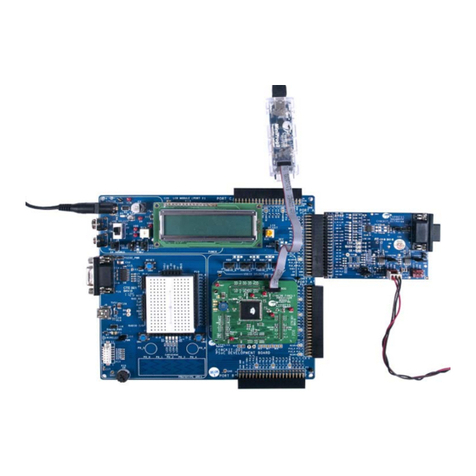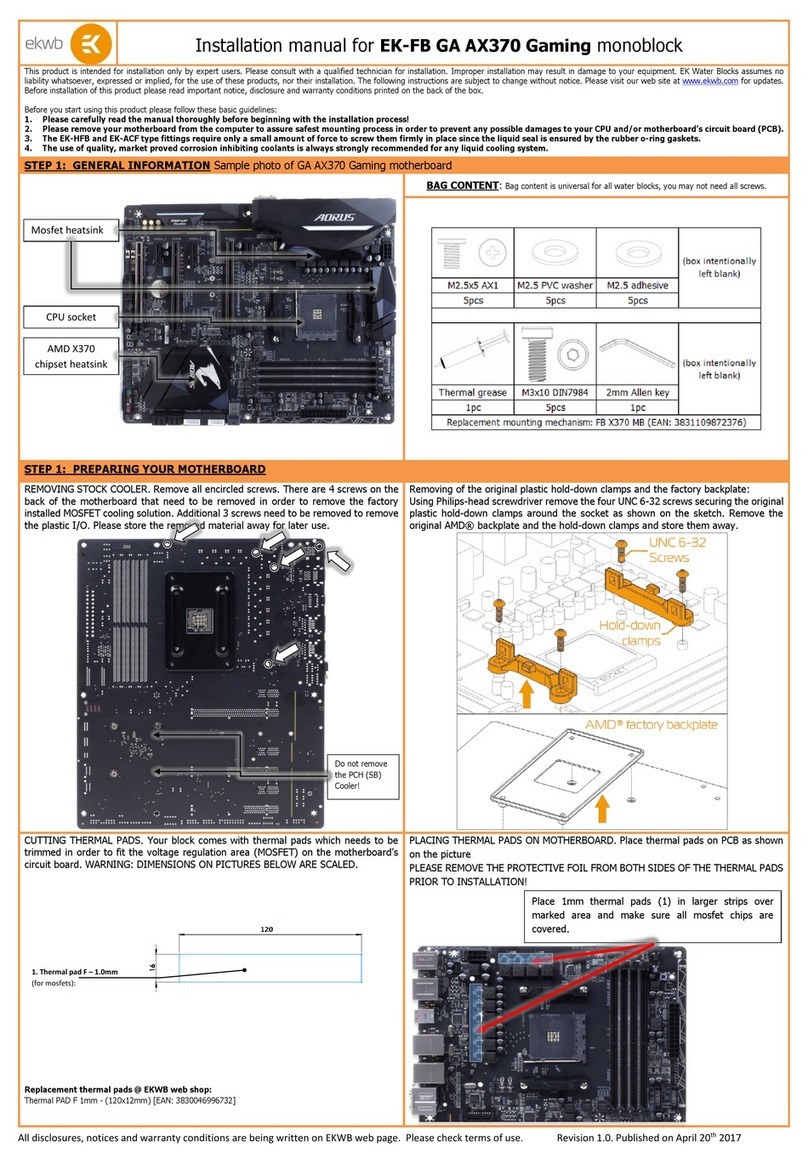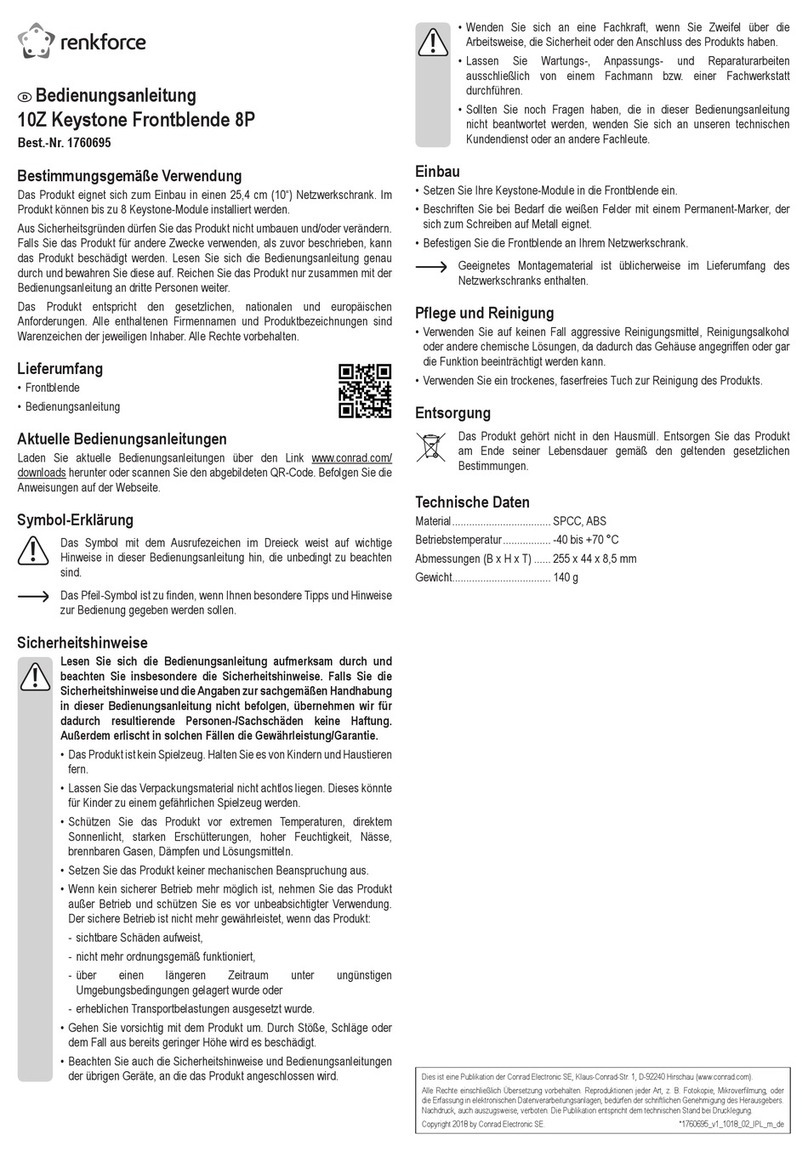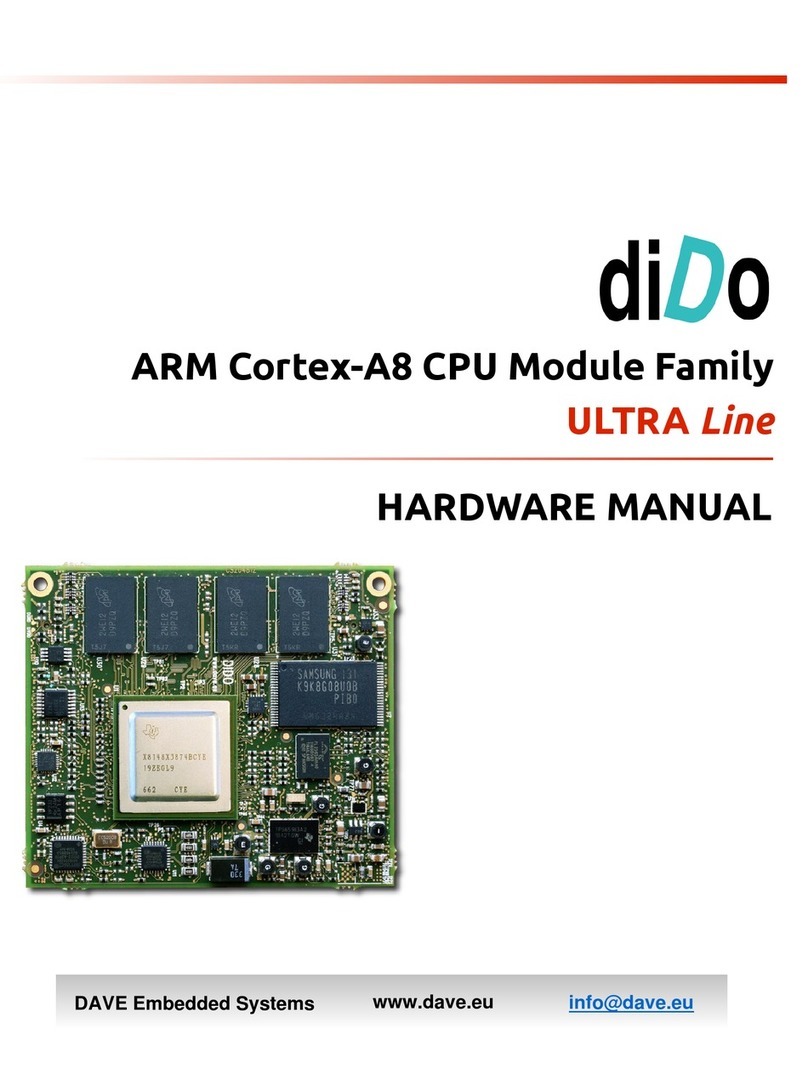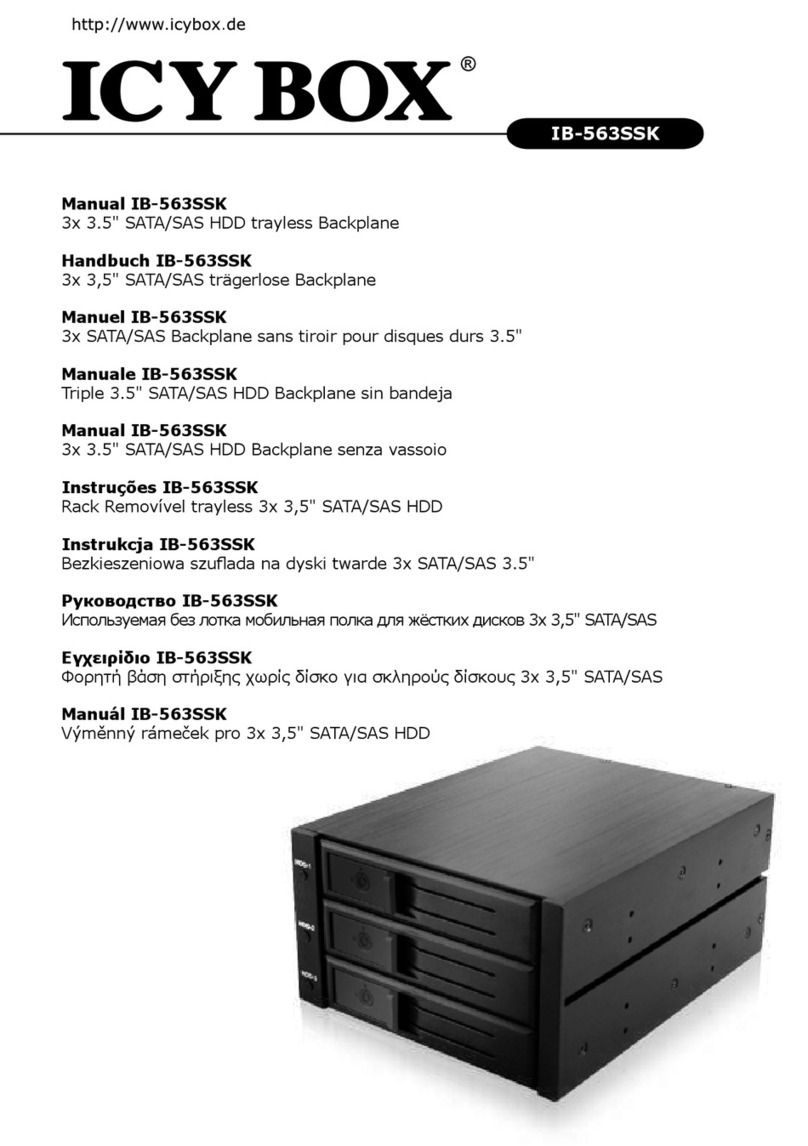Etteam ET-STM32F103 User manual


User’s Manual of Board Microcontroller version ET-STM32F103 (ARM Cortex-M3)
ETTCO.,LTD- 1- WWW.ETT.CO.TH
ET-STM32F103
38
ET-STM32F103 is ARM Cortex-M3 Board Microcontroller
that uses 32-Bit 64PIN (LQFP) Microcontroller
No.STM32F103RBT6 from STMicroelectronics. Resource
systems internal STM32F103RBT6 are quite perfect and
suitable for learning or applying to many projects well.
If user can learn and understand how to use resources
internal MCU well, it makes user can additionally modify
and develop more applications because hardware system of
STM32F103RBT6 have already included the necessary
components in the single MCU such as USB, SPI, I2C, ADC,
Timer/Counter, PWM, Capture, UART and etc.
ETT Team studies and researches on details of
STM32F103RBT6 and then designs it to be Board
Microcontroller version “ET-STM32F103”. We hope that user
who purchases this board can learn, modify, and develop
additionally as required under the reasonable price. The
main purpose to design the Board ET-STM32F103 is to
support user who needs to learn, modify, and develop the
board actually. The board structure consists of the basic
components that are necessary to simply learn and test

User’s Manual of Board Microcontroller version ET-STM32F103 (ARM Cortex-M3)
ETTCO.,LTD- 2- WWW.ETT.CO.TH
such as LED to display Output Logic value, Push Button
Switch to test Logic Input, Volume to adjust the voltage
to test A/D. Moreover, it provides components for
advanced learning to support applications such as Port
USB, SD Card, Dot-Matrix LCD, and RS232. Besides, there
are many available GPIO that are designed and can be used
with other components suitably. So, Board ET-STM32F103 is
one of the multipurpose boards that should not be missed.
Specifications of Board
1. Use ARM Cortex-M3 32Bit MCU No.STM32F103RBT6 from
STMicroelectronics.
2. Has 128 KB Flash Memory and 20KB Static RAM Internal
MCU
3. Use Crystal 8.00MHz + Phase–Locked Loop (PLL), run
72MHz Frequency and process data with 1.25 DMIPS/MHz
speed that is equal to 90 MIPS
4. Has RTC (Real Time Clock) Circuit with XTAL 32.768KHz
and Battery Backup
5. Support In-System Programming (ISP) and In-
Application Programming (IAP) through ON-Chip Boot-
Loader via Port USART-1 (RS232)
6. Has circuit to connect with standard 20 PIN JTAG ARM
to Debug as Real Time
7. Use +5VDC Power Supply that can be selected either
from USB Port or from external CPA-2PIN Connector
with +3V3/3A Regulate internal Board
8. Has Standard USB 2.0 as Full Speed insides
9. Has circuit to interface SD Card by using SPI Mode 1
Channel
10. Has RS232 Communication Circuit by using
standard ETT 4-PIN Connector 2 Channel
11. Has circuit to interface with Dot Matrix LCD
with circuit to adjust the brightness by using
standard ETT 14 PIN Connector with Jumper to set
Power Supply for LCD either +3.3V or +5V
12. Has 2 Push Button Switch Circuits
13. Has 8 LED Circuits to display status of testing
Output
14. Has circuit to create 0-3V3 voltage by using
adjustable Resistor to test A/D

User’s Manual of Board Microcontroller version ET-STM32F103 (ARM Cortex-M3)
ETTCO.,LTD- 3- WWW.ETT.CO.TH
15. Has independent 46 Bit GPIO to apply to many
applications such as A/D, I2C, SPI and Input/ Output
with Jumper to ON/OFF signal. User can set Jumper to
use it either GPIO or Hardware Self-Test such as 8
Bit LED, Push Button SW, Volume, USART2 and SD Card.
So, user is free to select functions independent
without unlimited hardware system of board.
•Header 10Pin IDE (PA[0..7])
•Header 10Pin IDE (PA[8..15])
•Header 10Pin IDE (PB[0..7])
•Header 10Pin IDE (PB[8..15])
•Header 10Pin IDE (PC[0..7])
•Header 10Pin IDE (PC[8..13])

User’s Manual of Board Microcontroller version ET-STM32F103 (ARM Cortex-M3)
ETTCO.,LTD- 4- WWW.ETT.CO.TH
Specifications of MCU STM32F103RBT6
•32 Bit ARM Cortex-M3 Processor, Run 72MHz Clock /
90MIPS(1.25DMIPS/MHz)
•128KByte Flash Memory / 20KByte Static RAM
•64LQPF Packet 51 Bit I/O + 16 External Interrupt with
5V-Tolerant Logic Level
•7 Channel DMA For Peripherals ADC, SPI, I2C, USART
•16 Channel / 12 Bit ADC Converter
•Support Debug with Serial wire Debugger(SWD) & JTAG
Interface
•3 x 16 Bit Timer(16-Input Capture / 16-Output Compare
/ 18-PWM)
•2-SPI, 2-I2C, 3-USART, 1-USB, 1-CAN, 2-WDG, RTC

User’s Manual of Board Microcontroller version ET-STM32F103 (ARM Cortex-M3)
ETTCO.,LTD- 5- WWW.ETT.CO.TH
Structure of Board ET-STM32F103
Figure displays structure of Board ET-STM32F103.

User’s Manual of Board Microcontroller version ET-STM32F103 (ARM Cortex-M3)
ETTCO.,LTD- 6- WWW.ETT.CO.TH
Figure Show the position of components on ET-STM32F103.
•No.1 is an external +5V Power Supply Connector.
•No.2 is Jumper J21 to select to use +5V either from
USB Port or external Connector.
•No.3 is LED Power to display status of Power Supply.
•No.4 is Switch BOOT0 that is used with Jumper J1 to
select operation mode of Board as Download type
either from USART1 or Normal Run; in this case, ON is
Download and OFF is Run.
•No.5 is Jumper J1(BOOT1) that is used with Switch
BOOT0 to select operation mode of Board as Download
type whether from USART1 or Normal Run; in this case,
it is always configured at BOOT1 position.
•No.6 is LED to display operation mode of board. If it
is ON, it means that SW-BOOT0 is in the ON position
and can download through USART1; on the other hand,
if it is OFF, it means that it is in Normal Run.
•No.7 is Switch RESET to reset operation of MCU.
•No.8 is GPIO (PA[0..7]) Connector.
•No.9 is GPIO (PC[0..7]) Connector.
•No.10 is GPIO (PA[8..15]) Connector.
•No.11 is GPIO (PB[8..15]) Connector.
•No.12 is JTAG ARM Connector to Debug as Real Time.
12
11
10
9
8
22
16 17
21
28
27
24
19
2
147
20
14
5
6
18
13
15
25
26
29
23
3

User’s Manual of Board Microcontroller version ET-STM32F103 (ARM Cortex-M3)
ETTCO.,LTD- 7- WWW.ETT.CO.TH
•No.13 is UASRT2 (RS232) Connector for usage.
•No.14 is Jumper J13 and J14 to select and set signal
of PA2 and PA3 to be used as either USART2 or GPIO.
•No.15 is USART1(RS232) Connector for usage and
Download.
•No.16 is Character LCD Connector by using with LCD
that is either +3.3V Supply or +5V Supply.
•No.17 is VR to adjust the brightness of Character
LCD.
•No.18 is Jumper J4 to select Power Supply of LCD to
be either +3.3V or +5V.
•No.19 is USB Connector to connect with USB Hub
version 2.0.
•No.20 is Jumper to select connection mode of USB.
•No.21 is 3V Battery for Backup the time of RTC.
•No.22 is GPIO(PC[8..13]) Connector.
•No.23 is GPIO(PB[0..7]) Connector.
•No.24 is socket to insert SD Card.
•No.25 is S3 to test Logic Input of PC[13].
•No.26 is S4 to test Logic Input of PA[0].
•No.27 is VR to adjust the 0-3V3 voltage to test
A/D(PA[1]).
•No.28 is LED to test Logic Output of PB [8..15].
•No.29 is Jumper J17, J20, J19, J18, J23, J24 to
select Enable or Disable for the connection between
GPIO Pin and component that is tested.
oJ17 is used to ENABLE (EN) or DISABLE (DIS) the
display of LED follow the control of PB[8..15]
oJ20 is used to ENABLE (EN) or DISABLE (DIS) the
connection between Pin PA1 of MCU and VR.
oJ19 is used to ENABLE (EN) or DISABLE (DIS) the
connection between Pin PA0 of MCU and Switch S4.
oJ18 is used to ENABLE (EN) or DISABLE (DIS) the
connection between Pin PC13 of MCU and Switch
S3.
oJ23 is used to ENABLE (EN) or DISABLE (DIS) the
connection between Pin PA8 of MCU and CD of SD
Card.
oJ24 is used to ENABLE (EN) or DISABLE (DIS) the
connection between Pin PC6 of MCU and WP of SD
Card.

User’s Manual of Board Microcontroller version ET-STM32F103 (ARM Cortex-M3)
ETTCO.,LTD- 8- WWW.ETT.CO.TH
Application of LED Display Circuit
There are 8 LED Displays of Board ET-STM32F130 and
the circuit that drives LED is connected as Source
Current. It uses Buffer No.74HC244 to drive current into
LED and then uses signal from Port PB[8..15] to run. In
this case, it runs with Logic “1” and stop running with
Logic “0”. User can select to ON/OFF operation of Buffer
No.74HC244 by setting Jumper J17 as shown in the picture
below.
D4
D5
D6
D7
D8
D9
D10
D11
R23
560
R24
560
R25
560
R26
560
R27
560
R28
560
R29
560
R30
560
1OE
1
1A1
2
1A2
4
1A3
6
1A4
81Y4 12
1Y3 14
1Y2 16
1Y1 18
2Y4 3
2Y3 5
2Y2 7
2Y1 9
GND
10
2A1
11
2A2
13
2A3
15
2A4
17
2OE
19 VCC 20
U5
74HC244
PB15
PB14
PB13
PB12
PB11
PB10
PB9
PB8
+
3V3
C20
100n
R22
22k
+
3V3
1
2
3
J17
D

User’s Manual of Board Microcontroller version ET-STM32F103 (ARM Cortex-M3)
ETTCO.,LTD- 9- WWW.ETT.CO.TH
Application of Push Button Switch Circuit
Push Button Switch Circuit uses the Push Switch type
with Pull-Up Circuit and is used with +3.3V Power Supply.
If this switch is not pressed, its logic status is “1”;
on the other hand, if this switch is pressed, its logic
status is “0”. It is used to test operation of Input
Logic. There are 2 sets for this circuit as follows;
•S3 (PC[13]) tests Logic Input or TAMP (Tamper
Detection).
•S4 (PA[0]) tests Logic Input or WKUP (Wakeup
Interrupt.
S3
TAMP
R32
10k
R31
1k
+
3V3
S4
WKUP
R34
10k
R33
1k
+
3V3
PC13 PA0
1
2
3
J18
TAMP
1
2
3
J19
WKUP

User’s Manual of Board Microcontroller version ET-STM32F103 (ARM Cortex-M3)
ETTCO.,LTD- 10 - WWW.ETT.CO.TH
Application of VR Circuit (0-3V3)
VR circuit uses VR Resistor to adjust values. This
circuit is used with +3.3V Power Supply and user will get
the Output value that is voltage in the range of 0V to
+3.3V follows the adjustment of the Resistor. The Output
will be inputted into Pin PA[1] to create Input voltage
for testing operation of A/D (PA[1]) circuit. User can
remove the connection between signal PA[1] and VR circuit
by using Jumper J20 as shown in the circuit below.
P2
10k
+
3V3
R35
330
PA1
1
2
3
J20
ADC1
C26
100n

User’s Manual of Board Microcontroller version ET-STM32F103 (ARM Cortex-M3)
ETTCO.,LTD- 11 - WWW.ETT.CO.TH
Application of JTAG ARM
JTAG or JTAG ARM is IDE 20 Pin Connector to interface
with JTAG Debugger. The method to arrange circuit and
signal under the standard of JTAG is shown in the figure
below.
1
3
5
7
910
8
6
4
2
11
13
15
17
12
14
16
18
19 20
J10
JTAG
+3V3
R12
10k
R11
10k
R10
10k
PB4
PA15
PA13
PA14
PB3
RESET
R9
10k
R8
10k
R7
10k
R6
10k
R5
10k
TRST
TDI
TMS
TCK
TDO
RST
R5-R9=NA
TRST
TDI
TMS
TCK
GND
GND
GND
GND
VTref
ARM JTAG Pin Connector
GND
GND
GND
GND
GND
RTCK
TDO
RES#
NC
NC
VTarget

User’s Manual of Board Microcontroller version ET-STM32F103 (ARM Cortex-M3)
ETTCO.,LTD- 12 - WWW.ETT.CO.TH
Application of Character LCD
LCD can be interfaced with Character Dot-Matrix LCD
only in the format of 4 Bit Data Interface. It uses 7 Bit
that is signal from PC[0..3] and PC[10..12] to interface
with LCD. The method to connect signal cable from
connector of Port LCD to LCD Display is to use the name
of signal to be reference; moreover, user must connects
all 14 signal cables corresponding with their names as
shown in the picture below.
Connection between Signals and LCD
•DB4 = PC[3]
•DB5 = PC[2]
•DB6 = PC[1]
•DB7 = PC[0]
•RS = PC[12]
•RW = PC[11]
•EN = PC[10]
1
3
5
7
910
8
6
4
2
11 12
1413
J5
ET-CLCD
P1
10k
+5V
VDD
RS
EN
D1
D3
D5
D7
GND
VO
RW
D0
D2
D4
D6
PC12
PC10
PC2
PC0
PC11
PC3
PC1
1
2
3
J4 VLCD
+3V3
EN
D1
D3
D5
RW
D0
D2
D4
VORS
GND+VCC
D7 D6
ET-CLCD

User’s Manual of Board Microcontroller version ET-STM32F103 (ARM Cortex-M3)
ETTCO.,LTD- 13 - WWW.ETT.CO.TH
Application of SD Card Memory
Board ET-STM32F103 supports the connection of SD Card
Memory by using SPI Mode Interface; moreover, all
circuits that are connected with SD Card use signal pins
of function SPI1 and GPIO from MCU as follows;
•CD/DAT3 uses PA4(SPI1-SS).
•CLK uses PA5(SPI1-SCK).
•DAT0 uses PA6(SPI1-MISO).
•CMD uses PA7(SPI1-MOSI).
•CD uses PA8(GPIO) to check the insertion of memory
card; if user does not need to use this pin, can
set Jumper J23 on [2-3] to remove the connection
between Pin PA8 and Pin CD(Card Detection) of SD
Card.
•WP uses PC6 (GPIO) to check the setting of Write
Protect of memory card; if user does not need to
use this pin, can set Jumper J24 on [2-3] to
remove the connection between Pin PC6 and Pin WP
(Write Protect) of SD Card.
+3V3
R41 1k
R37
10k
R42 1k
R36
10k R38
22k R39
22k
C22
100n
C21
10uF
PA8
PA4
PA7
PA5
PA6
PC6
CD/DAT3
1
CMD
2
VSS
3
VDD
4
CLK
5
DAT0
7VSS
6
DAT1
8
DAT2
9
CD
10
WP
11
G1
12
G2
13
SK1
SD/MMC
1
2
3
J24
WP
1
2
3
J23
CD

User’s Manual of Board Microcontroller version ET-STM32F103 (ARM Cortex-M3)
ETTCO.,LTD- 14 - WWW.ETT.CO.TH
Application of RS232
Port RS232 is signal RS232 that has converted signal
level of MAX3232. There are 2 channels; USART-1 and
USART-2. Both channels can be used to connect with Signal
RS232 to transmit-receive data. Moreover, USART-1 can be
used to be ISP Download to download Hex File into MCU; in
this case, it must be used with Jumper J1(BOOT1) SW-S1
(BOOT0) and SW-S2 (RESET) to reset CPU to start running
in Boot Loader Mode to download Hex File into MCU (see
more detail of “How to Download Hex File into MCU of
Board”).
2 41 3
+3V3
RXD1
TXD1
GND
USART-1(Download)
2 41 3
+3V3
RXD2
TXD2
GND
USART-2
•USART-1 uses signal pin from PA9(TXD1) and
PA10(RXD1).
•USART-2 uses signal pin from PA2(TXD2) and
PA3(RXD2).
PA2 and PA3 has Jumper J14 and J13 to select signal for
using as either function USART2 or GPIO as shown in the
figure below.

User’s Manual of Board Microcontroller version ET-STM32F103 (ARM Cortex-M3)
ETTCO.,LTD- 15 - WWW.ETT.CO.TH
C1+
1
C1-
3
C2+
4
C2-
5
R1O
12
T1I
11
R2O
9
T2I
10
VCC 16
V+ 2
V- 6
GND 15
R1I 13
T1O 14
R2I 8
T2O 7
U2
ICL3232
C10
100n C11
100n
C12
100n C13
100n
C9
100n
+3V3
+3V3
+
3V3
RXD-1
TXD-1
RXD-2
TXD-2
1
2
3
4
J11
USART1(Download)
1
2
3
4
J12
USART2
PA10 PA9
PA3
PA2
R14
100
1
2
3
J13
1
2
3
J14
PA3-P
PA2-P
Cable that is used to connect signal RS232 between
Comport of computer PC and USART-1 Connector and USART-2
Connector of Board ET-STM32F103 is shown as below;
1
6
2
7
3
8
4
9
5
DB9(FEMALE)
1
2
3
4
ET-RS232
RXD
TXD
GND
RXD
RTS
DSR
TXD
CTS
DTR
GND
CD
RI
RS232-PC
Figure displays circuit of signal cable for RS232.

User’s Manual of Board Microcontroller version ET-STM32F103 (ARM Cortex-M3)
ETTCO.,LTD- 16 - WWW.ETT.CO.TH
Application of Power Supply
Power Supply Circuit can be used with +5VDC that can
be set by Jumper J21 to use +5V either from USB or from
external CPA-2PIN Connector. The Power Supply that is
connected will be sent to +3V3/3A Regulate Circuit.
Power Supply Circuit in the part of 3.3V Regulate
circuit must be supplied to CPU and all I/O circuits of
board, except LCD that has Jumper J4, so it can be set to
use Power supply either +3.3V or +5VDC.
C25
100n
+3V3 R40
560
IN
3
GND
1
OUT 2
U3
LD1085
C23
10uF/16v C24
100uF/16V
1
2
+
5VD
C
1
2
3
J21
PWRSEL
VUSB
D12
SM-4004
F1
FSMD110
+5V

User’s Manual of Board Microcontroller version ET-STM32F103 (ARM Cortex-M3)
ETTCO.,LTD- 17 - WWW.ETT.CO.TH
Application of Port I/O Connectors on Board
Port I/O Connectors of CPU will be externally
arranged to connector types, so it makes user can select
and interface them easily. There are 6 sets as follows;
•6 IDE 10 Pin Connectors and there are 8 Bit per each
set. Signals are arranged as follows;
PA2P
PA4
PA6
+3V3
PA3P
PA5
PA7
GND
PA1PA0
PA[0..7]
PA10
PA12
PA14
+3V3
PA11
PA13
PA15
GND
PA9PA8
PA[8..15]
PB2
PB4
PB6
+3V3
PB3
PB5
PB7
GND
PB1PB0
PB[0..7]
PB10
PB12
PB14
+3V3
PB11
PB13
PB15
GND
PB9PB8
PB[8..15]
PC2
PC4
PC6
+3V3
PC3
PC5
PC7
GND
PC1PC0
PC[0..7]
PC10
PC12
NC
+3V3
PC11
PC13
NC
GND
PC9PC8
PC[8..13]

User’s Manual of Board Microcontroller version ET-STM32F103 (ARM Cortex-M3)
ETTCO.,LTD- 18 - WWW.ETT.CO.TH
How to download Hex File into MCU of Board
The method to download Hex File into Flash Memory of
MCU internal board is to use Program “Flash Loader” of
“STMicroelectronics” that is connected with MCU through
Serial Port of computer PC. This program can be
downloaded free without any charge from www.st.com.
Procedures to download Hex File into MCU
1. Connect RS232 Cable between RS232 Serial Port
Communication of PC and Board USART-1.
2. Supply power into board; in this case, LED PWR is in
status ON.
3. Run Program Flash Loader; if it is version demo 1.1,
it will display results as follows;
4. Set initial values for program as required; if using
with STM32F103RBT6 of Board ET-STM32F103 from ETT,
please set the values into program as follows;
4.1 Set COM Port corresponding with the COM Port
that is actually used (in the example, it is
COM4).

User’s Manual of Board Microcontroller version ET-STM32F103 (ARM Cortex-M3)
ETTCO.,LTD- 19 - WWW.ETT.CO.TH
4.2 Set Baud Rate in the range of 1200 – 115200;
if computer has the problem or ERROR when
setting the high Baud Rate, please reduce the
Baud Rate. In this example, it uses 115200.
4.3 Set Parity Bit of Serial Port; in this case,
we recommend setting it as None.
4.4 Set Timeout of communication; in the
example, it is 1 second.
4.5 RESET MCU to run in Boot Loader, please
follow these instructions;
Set Jumper J1 on BOOT1 position.
ON Switch S1(BOOT0), LED BL will be ON.
Press Switch RESET and then remove, it
makes CPU start running in Boot Loader.
5. Click “Next” to start downloading; if everything is
correct, program will read status from CPU and report
the results. If using STM32F103RBT6, it displays
result as shown in the picture below.
Popular Computer Hardware manuals by other brands
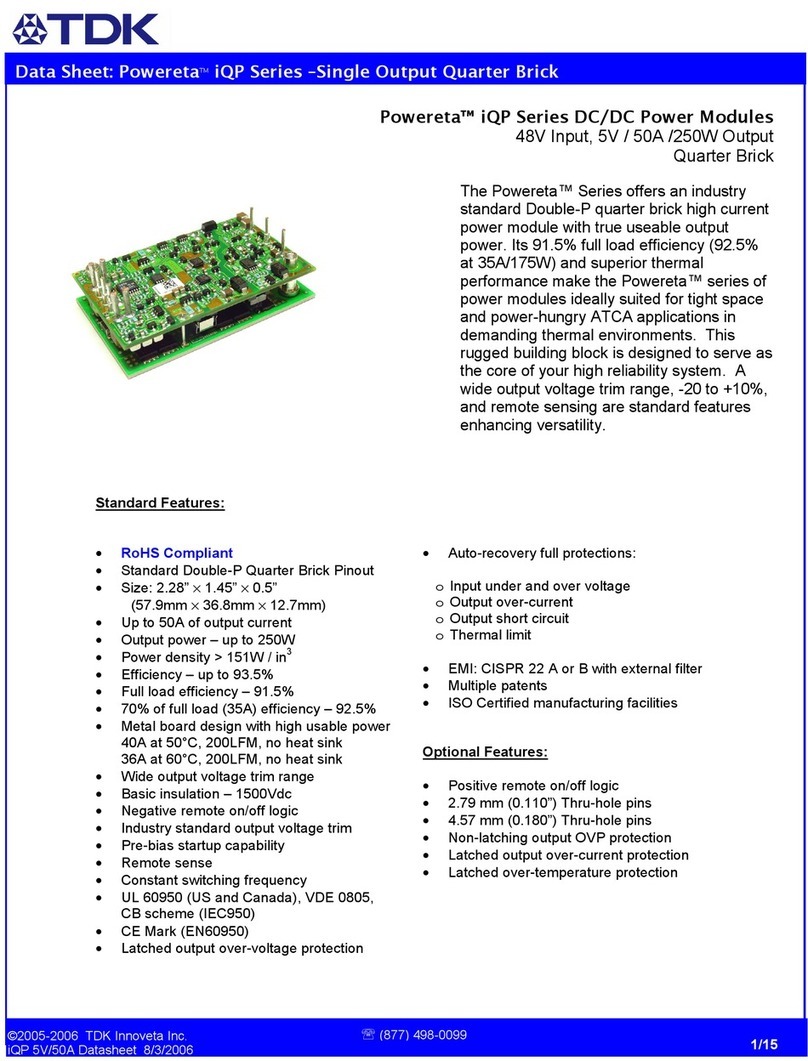
TDK
TDK Powereta iQP 5V/50A datasheet
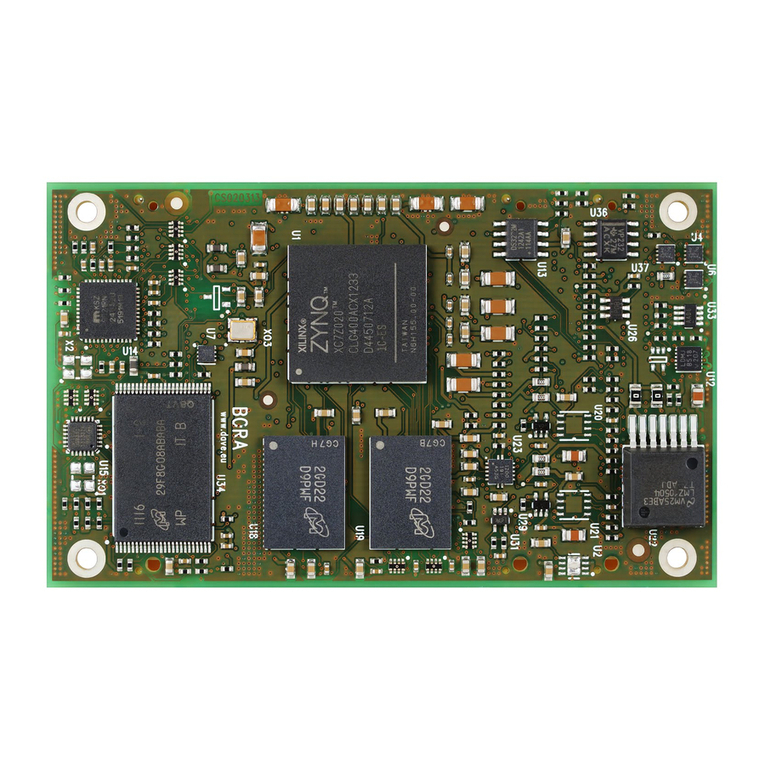
Dave Embedded Systems
Dave Embedded Systems ARM Cortex-A9 MPCore quick start guide
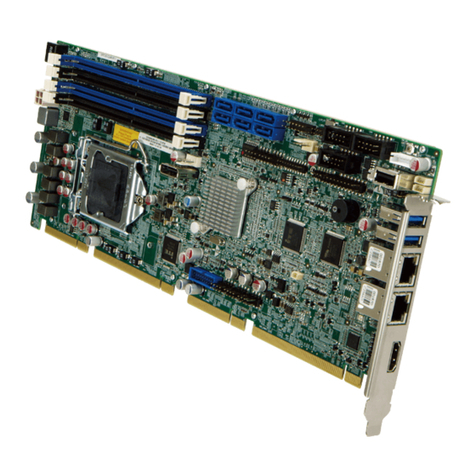
IEI Technology
IEI Technology SPCIE-C246 user manual
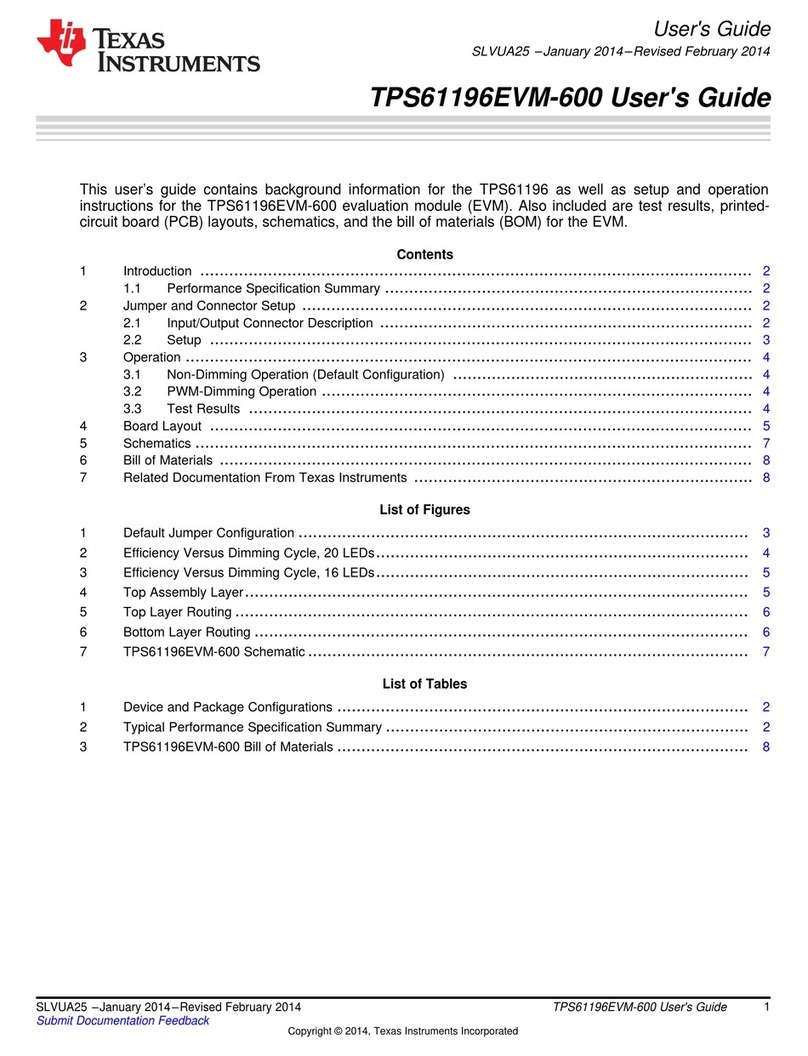
Texas Instruments
Texas Instruments TPS61196EVM-600 user guide
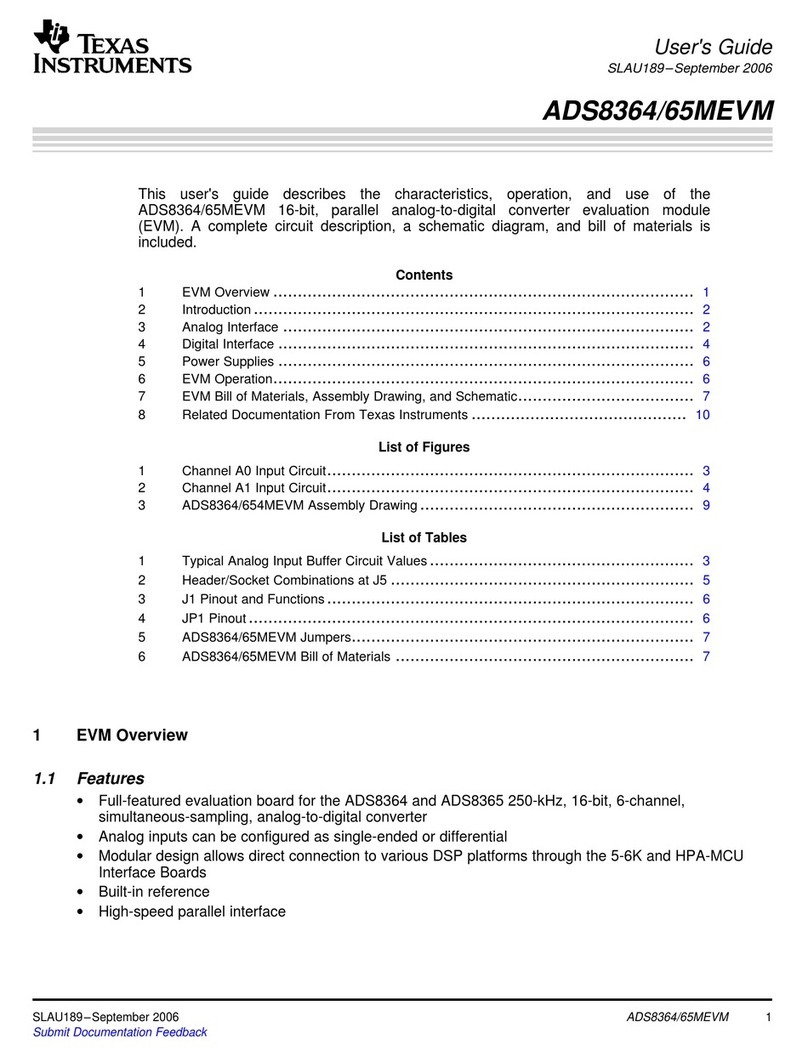
Texas Instruments
Texas Instruments ADS8365MEVM user guide
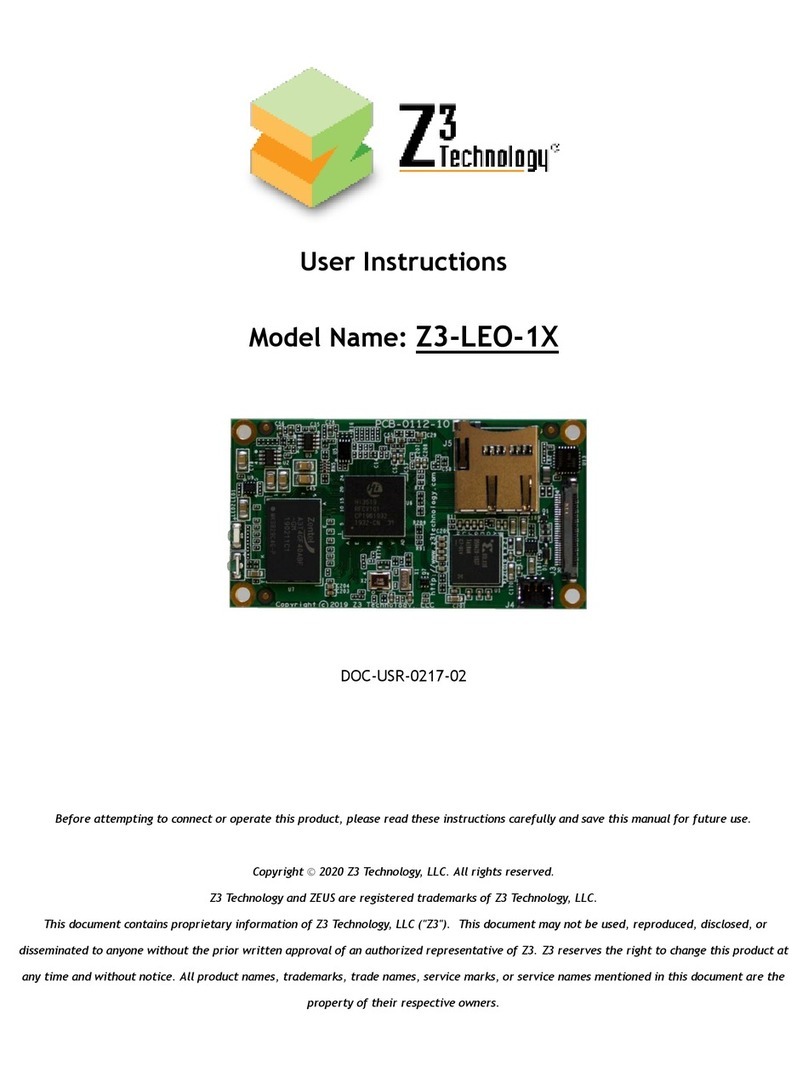
Z3 Technology
Z3 Technology Z3-LEO-1X User instructions
